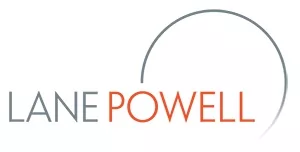Faced with multiple legal challenges and a blistering negative opinion from one federal court of appeals, OSHA has announced it will "take no steps to implement or enforce" the Emergency Temporary Standard (ETS) until the courts issue further direction. OSHA had issued an ETS requiring employers with 100 or more employees to ensure that their workforces are vaccinated against COVID-19 or submit to weekly testing. (See our prior legal update here.) Based on a recent count, at least 27 lawsuits have been filed challenging the ETS by several states, labor unions, private employers, and the Republican National Committee.
On November 12, the U.S. Fifth Circuit Court of Appeals issued an opinion severely questioning the legality of the ETS. The court entered a temporary stay that prevents OSHA from enforcing the ETS, pending court review and consideration of motions for a permanent injunction.
When legal challenges to an OSHA standard are filed in multiple circuit courts, judicial procedure permits a party to one of the challenges to request that all cases be consolidated and heard by a single circuit court, which is chosen by lottery. The Sixth Circuit (which encompasses Kentucky, Ohio, Michigan, and Tennessee) was selected by lottery to hear these challenges and determine if a permanent injunction should be granted. This circuit includes many judges appointed by Republican presidents and can be expected to give careful scrutiny to the legality of the ETS.
It is not clear how quickly the Sixth Circuit will hear arguments and issue a decision. In the meantime, the Fifth Circuit's stay likely will remain in effect. Regardless of what the Sixth Circuit decides, it is likely that the dispute will be appealed to the U.S. Supreme Court. With only one Circuit Court decision to consider, however, the Supreme Court could easily decide not to accept review.
States with state-approved OSHA plans (e.g., Alaska, California, Oregon, and Washington) can choose whether to move forward by adopting analogous state safety standards while the Sixth Circuit considers the fate of the ETS. Typically, states with state-OSHA plans are required to adopt standards that are at least as effective as the ETS within 30 days. However, since OSHA is currently not enforcing the ETS until the court issues further direction, these states may wait to issue their analogous state safety standards. If a state does move forward with adopting analogous state safety standards, it is highly likely that those state standards will also be challenged in court. Political input from the employer community and other stakeholders (including unions and employee advocacy groups), the inevitable court challenges, and the uncertain fate of the ETS may dissuade many states with state-OSHA plans from adopting their own standards at this time.
All this is to say that the future of the ETS, and analogous
state safety standards, is uncertain. And it is not known how long
it will take for this process to play out.
With All This Uncertainty, What Should Employers Do?
Employers certainly can choose to move forward with implementing a mandatory vaccination policy, or a policy providing for vaccination and testing, consistent with the ETS. This may be worthwhile, particularly if some of an employer's workforce is subject to other state or federal vaccine mandates (e.g., federal contractors, health care workers). Employers who are not subject to the federal or state vaccine mandates also have the choice to voluntarily adopt a vaccination policy, as many large employers began doing during the summer of 2021, when the Delta variant became more prevalent. Adopting a vaccination policy could be beneficial for employers who see vaccination as critical to their efforts to bring employees back to the workplace premises on a more frequent and permanent basis.
Employers who are not inclined to implement a vaccination policy until legally required to do so may nonetheless benefit by continuing to plan for implementation of the ETS or possibly a state standard. If upheld, the ETS requires employers to adopt written vaccination and testing policies and to determine the vaccination status of their employees by December 6, 2021. The ETS would also require testing of unvaccinated employees beginning January 4, 2022. It is possible that the Sixth Circuit, and the subsequent appeals process, could move quickly enough to require only slight modification to the ETS's deadlines, assuming it is upheld; however, this is unlikely.
Large employers who would be subject to the ETS should closely monitor the Sixth Circuit case. Employers with operations in states covered by state-OSHA plans should also monitor their state agencies for future developments. Additionally, employers should consider determining the vaccination status of their employees because this information may be valuable for other purposes, such as safety planning, quarantine purposes, work assignments, and religious and medical accommodations.
Given the logistical challenges presented by the vaccine verification and testing processes, employers would be prudent to plan ahead by developing vaccination and testing policies. This is particularly true for employers who currently have large numbers of unvaccinated employees. Planning now will help ensure compliance if and when the ETS is upheld (or if a state standard is implemented), even if the deadlines for implementation are tight.
The content of this article is intended to provide a general guide to the subject matter. Specialist advice should be sought about your specific circumstances.



